Brewing Beer with Victory Malt
Published: August 8, 2025 at 1:52:53 PM UTC
Last updated: December 12, 2025 at 2:26:16 PM UTC
Brewing beer is an art that requires a perfect blend of ingredients and techniques. The type of malt used is critical, as it greatly influences the beer's taste. Victory Malt, celebrated for its nutty, toasty, and warm bread crust notes, is a favorite among brewers. By adding Victory Malt to their recipes, brewers can craft a range of beer styles that highlight these deep, malty flavors. Whether you're an experienced brewer or just beginning, mastering the use of Victory Malt can significantly improve your brewing skills. This leads to more complex and engaging beers.
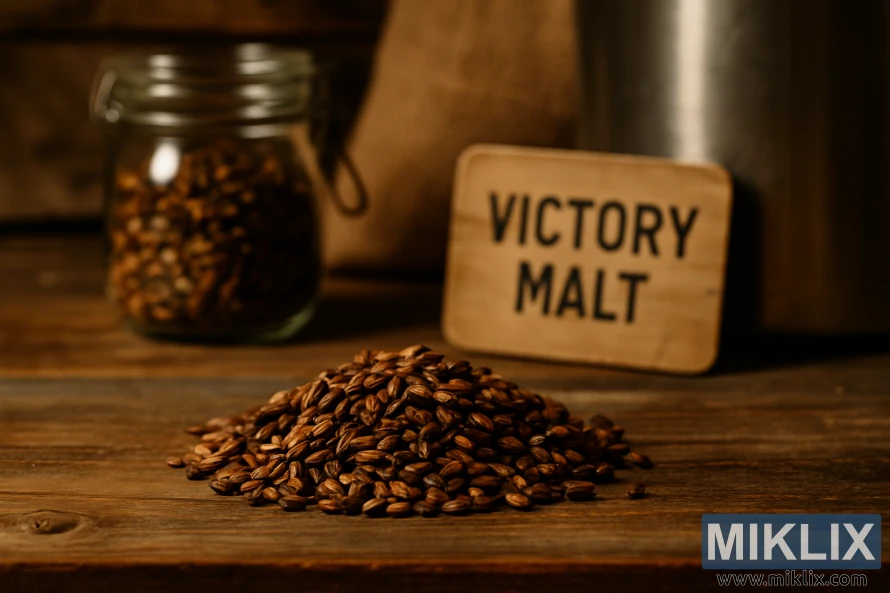
Key Takeaways
- Victory Malt adds nutty, toasty flavors to beer.
- It's versatile and can be used in various beer styles.
- Effective use of Victory Malt can enhance brewing techniques.
- The malt contributes to a rich, complex flavor profile.
- Brewing with Victory Malt requires a balance of ingredients and techniques.
What Makes Victory Malt Special
Victory Malt stands out in the brewing world for its unique flavor profiles. It boasts a deep golden to brown color, thanks to the malting process. This process not only enhances its color but also its flavor.
The taste of Victory Malt is complex, with notes of toast, biscuit, baking bread, and nuts. It's celebrated for adding depth and warmth to beer without harsh flavors. Its clean taste makes it perfect for brewers aiming to craft nuanced, balanced beers.
Victory Malt's versatility in brewing is unmatched. It suits a wide range of beer styles, from amber ales to bocks. It brings a richness and complexity that enhances the taste experience. Brewers use it to create beers with layered flavors, appealing to diverse palates.
In summary, Victory Malt's distinct flavor and brewing qualities make it essential for craft brewers. It elevates beer's flavor and character without overpowering other ingredients. This has solidified its place as a key ingredient in many breweries.
Technical Specifications of Victory Malt
The technical specifications of Victory Malt, including its moisture content and extract capacity, are vital for recipe formulation. These details allow brewers to forecast how Victory Malt will act in their brewing endeavors.
Victory Malt's typical analysis encompasses several critical factors for brewers to ponder:
- Moisture content: impacts the malt's stability and extract capability
- Extract FG (Fine Grind): shows the malt's extract possibility when mashed
- Dry basis: offers a gauge of the malt's extract capability on a dry weight basis
- Color: influences the beer's overall color and taste profile
These technical specifics are essential for brewers to accurately craft recipes and forecast the malt's performance. By grasping Victory Malt's characteristics, brewers can make informed choices about mashing temperatures, grain compositions, and brewing methods.
The following table outlines the typical technical specifications of Victory Malt:
- Moisture Content: 4.5%
- Extract FG: 78%
- Dry Basis: 310-320 °L
- Color: 28-30 °L
By taking these technical specifications into account, brewers can refine their brewing process. This leads to achieving the desired flavor and quality in their beers.
Understanding Victory Malt's Flavor Contributions
Victory Malt introduces a unique flavor profile to beers, marked by its nutty and toasty notes. It's highly valued for enriching the flavor of various beer styles with its depth and complexity.
The distinct flavor of Victory Malt is clean and aromatic, much like baking bread. This quality makes it perfect for brewing Nut Brown Ales and other medium to dark beers. It's ideal for beers where a rich, malty taste is sought.
- A warm, bread crust aroma that enhances the overall beer flavor
- Nutty and toasty notes that add complexity to the malt flavor
- A clean flavor profile that allows for versatility in brewing various beer styles
When used correctly, Victory Malt can greatly improve the flavor of beers. Its versatility across different beer styles makes it a key ingredient in many brewing recipes.
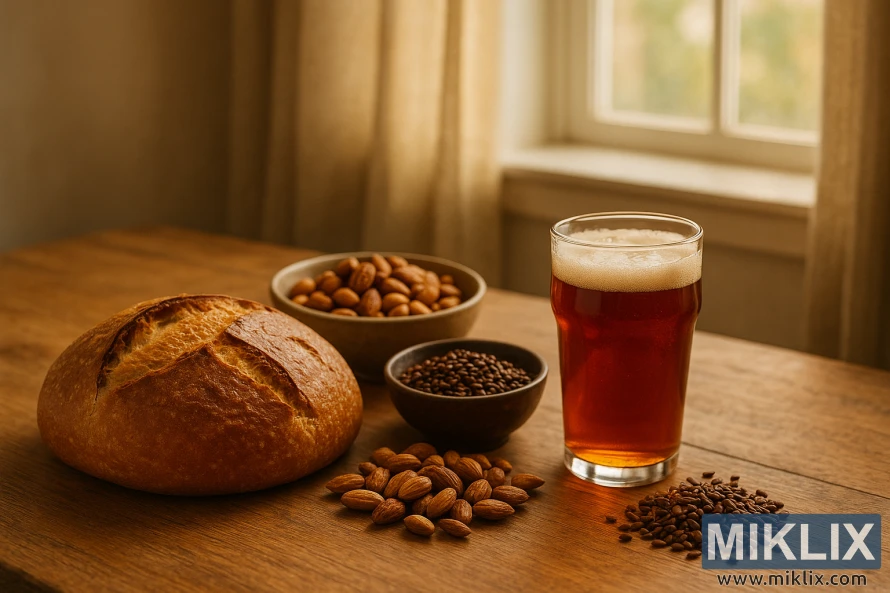
Best Beer Styles for Victory Malt
Victory Malt is a versatile ingredient that can elevate various beer styles with its distinct flavor profile. Its nutty, toasty flavors and warm color make it suitable for a range of ales and lagers.
When using Victory Malt, brewers should consider styles that complement its flavor contributions. It is well-suited for lighter-colored beers where a touch of complexity is desired.
- Amber Ales: The malt's toasty flavors complement the hoppy notes in amber ales.
- Vienna Lagers: Victory Malt adds depth and warmth to these malty lagers.
- Scottish Ales: The malt's nutty flavors enhance the rich, malty character of Scottish ales.
By incorporating Victory Malt into these beer styles, brewers can achieve a more complex and engaging flavor profile. The key is to use it in moderation, as excessive amounts can overpower the beer's delicate balance.
Optimal Mashing Techniques for Victory Malt
To fully exploit Victory Malt, brewers must grasp the best mashing techniques. Victory Malt is celebrated for its nutty, toasty notes. It's a favorite among brewers aiming to enrich their beers.
The brewing process with Victory Malt requires meticulous mashing techniques. The malt's diastatic power and extract capability are critical. A well-executed mashing technique can elevate the malt's flavors, leading to a more complex beer.
To maximize Victory Malt's extract, brewers should employ certain mashing techniques:
- Step mashing to gradually increase the temperature, boosting enzyme activity and extract efficiency.
- Using a thicker mash to enhance the extraction of flavors and colors from the malt.
By adopting these methods, brewers can optimize their brewing process. This ensures they fully utilize Victory Malt's qualities.
Effective mashing techniques not only boost the beer's flavor and color. They also lead to a more consistent brewing process. Mastering the optimal mashing techniques for Victory Malt is essential for achieving the desired beer characteristics.
Recipe Formulation Guidelines
Creating recipes with Victory Malt demands a thorough grasp of its taste and technical details. Brewers need to think about how its nutty, toasty notes will blend with other ingredients. This is key to achieving the right balance in the recipe.
When making a brewing recipe, it's vital to balance Victory Malt's taste with other malts and hops. The ratio of Victory Malt to other ingredients greatly affects the beer's overall taste.
To forecast the beer's color and texture, brewers must consider Victory Malt's color contribution, usually between 15-20 °L. This detail is essential for getting the beer's look and feel just right.
- Think about the beer style and how Victory Malt will boost its features.
- Adjust the flavor balance by tweaking the Victory Malt and other ingredient ratios.
- Keep an eye on the beer's color and texture to match your desired results.
By adhering to these guidelines, brewers can skillfully add Victory Malt to their recipes. This results in complex, well-balanced beers that highlight its distinctive qualities.
Combining Victory Malt with Other Grains
The art of grain blending is about mixing Victory Malt with other grains to create a rich taste. This method allows brewers to craft beers with complex flavors. These flavors cater to a wide range of palates.
Victory Malt, known for its nutty and toasty flavors, pairs well with other specialty malts. For example, combining it with a caramel malt adds sweetness and depth. Pairing it with a Munich malt enhances the maltiness and complexity.
When blending grains, understanding each malt's characteristics is key. The ratio of Victory Malt to other grains greatly affects the final flavor. Start with a small Victory Malt proportion (10-20%) and adjust to taste.
Some successful grain blending combinations include:
- Victory Malt + Caramel Malt: Adds sweetness and depth
- Victory Malt + Munich Malt: Enhances maltiness and complexity
- Victory Malt + Pale Malt: Provides a balanced and crisp finish
These combinations can be adjusted based on the desired beer style and flavor profile.
Experimenting with different grain blends showcases Victory Malt's versatility. Whether brewing a traditional style or a new recipe, blending Victory Malt with other grains can enhance your beer's flavor. This appeals to beer enthusiasts.
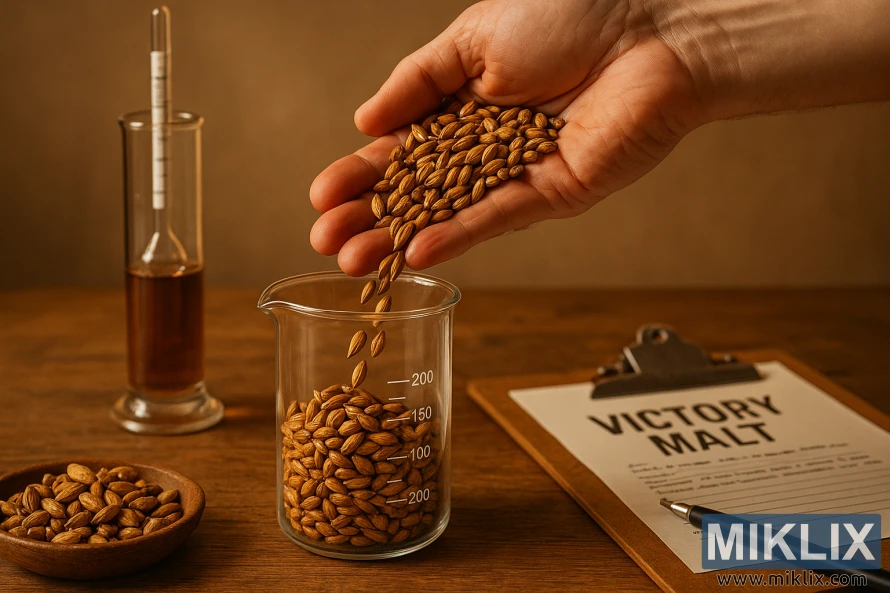
Common Brewing Challenges with Victory Malt
To fully appreciate Victory Malt, brewers must tackle common brewing hurdles. These challenges are essential to mastering this specialty malt.
One major issue is balancing Victory Malt's distinct flavors with other ingredients. Its nutty and toasty notes can overwhelm if not balanced properly.
Another hurdle is managing the color Victory Malt adds to beers. While it enriches the beer's depth, too much can darken it beyond desire.
To overcome these challenges, brewers should follow some key strategies:
- Adjust the Victory Malt's proportion in the grain bill to hit the perfect flavor balance.
- Keep an eye on the mash temperature to extract the malt's flavors and colors effectively.
- Consider the beer style and how Victory Malt will blend with other ingredients for the best result.
By understanding these challenges and using effective troubleshooting, brewers can fully exploit Victory Malt. This leads to creating complex, high-quality beers that highlight its unique traits.
Impact on Beer Color and Body
Victory Malt is renowned for its ability to enrich the color and body of beer. It imparts a deep golden to brown hue, elevating the beer's visual appeal.
The influence of Victory Malt on beer color is profound. It can vary from a deep golden to a rich brown, contingent upon brewing techniques and the malt's proportion in the recipe.
Victory Malt also shapes the beer's body and mouthfeel. The malting process imbues it with distinct flavor and texture, leading to a fuller body and more satisfying mouthfeel.
- Victory Malt can introduce a more complex flavor profile to the beer.
- It contributes to a smoother, more rounded mouthfeel.
- The impact on body and color can significantly enhance the beer's drinkability and appeal.
Understanding Victory Malt's effects on beer color and body empowers brewers. They can refine their recipes to achieve the desired characteristics in their final product.
Storage and Handling Requirements
To ensure Victory Malt performs at its best, it's vital to adhere to proper storage and handling practices. Store Victory Malt in a cool, dry spot, away from sunlight and moisture. This environment helps preserve its quality.
While refrigeration isn't mandatory, a temperate storage area with low humidity is essential. This prevents the malt from degrading. It's also important to keep the storage area free from pests to avoid contamination.
- Store in a temperate environment, away from extreme temperatures.
- Maintain low humidity to prevent moisture absorption.
- Keep the storage area clean and pest-free.
- Use airtight containers to preserve freshness.
By adhering to these guidelines, brewers can maintain the freshness and effectiveness of their Victory Malt. This ensures the quality of their beer remains high.
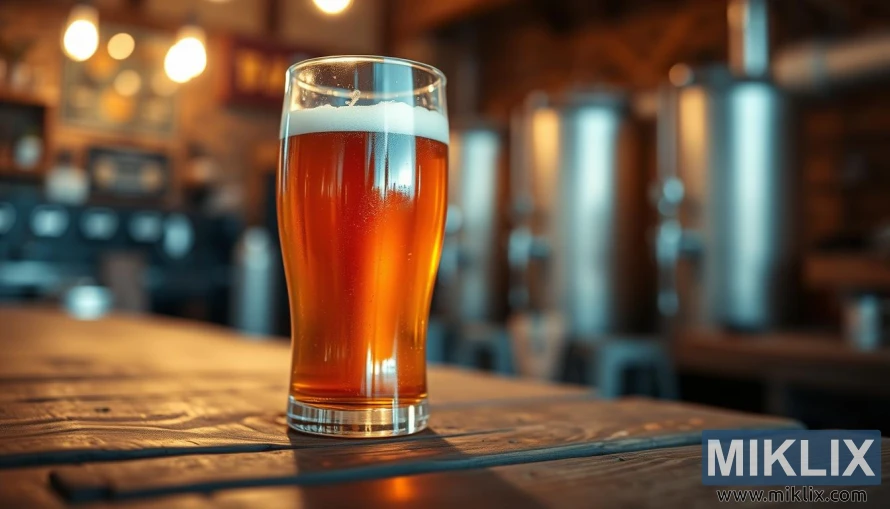
Commercial Examples Using Victory Malt
Victory Malt's versatility is evident in commercial brewing, where it enhances flavors across various beer styles. Its adaptability has made it a staple in many breweries' recipes. This has led to a wide range of beers that highlight its unique qualities.
In amber ales, Victory Malt brings a rich, malty taste and a deep amber hue. Sierra Nevada is among the breweries that have successfully integrated it. Their beers are complex, balanced, and appealing to a broad audience.
Victory Malt also shines in bocks and porters, adding depth and warmth. Bell's, for example, uses it in their seasonal offerings. The malt's nutty and toasty notes complement a range of hop profiles. This makes it a valuable addition to many beer recipes.
- Victory Malt adds complexity to amber ales and bocks.
- It is used by renowned breweries like Sierra Nevada and Bell's.
- The malt enhances flavor profiles with its nutty and toasty notes.
Studying these commercial examples offers brewers valuable insights. They can see how Victory Malt can elevate their beers, making them stand out in the market.
Substitutes for Victory Malt
Brewers seeking alternatives to Victory Malt have several options. Each malt offers unique characteristics that can enhance beer flavors. Victory Malt is celebrated for its nutty and toasty notes. Other malts can replicate these flavors, depending on the brewer's goals.
Some viable substitutes include:
- Aromatic Malt: Known for its intense malty aroma, Aromatic Malt can add depth to beers.
- Munich Malt: This malt type offers a rich, malty flavor and can contribute to a beer's overall complexity.
- Biscuit Malt: With its distinct biscuit-like flavor, Biscuit Malt can be used to create a similar toasted character.
When selecting a substitute, brewers must consider the desired beer characteristics. The malt's flavor profile, color contribution, and enzymatic activity are key factors. These elements influence the beer's overall taste and quality.
Understanding the characteristics of these alternative malts is essential. This knowledge allows brewers to make informed decisions. By choosing the right malt, brewers can ensure their beer meets the desired flavor and quality standards.
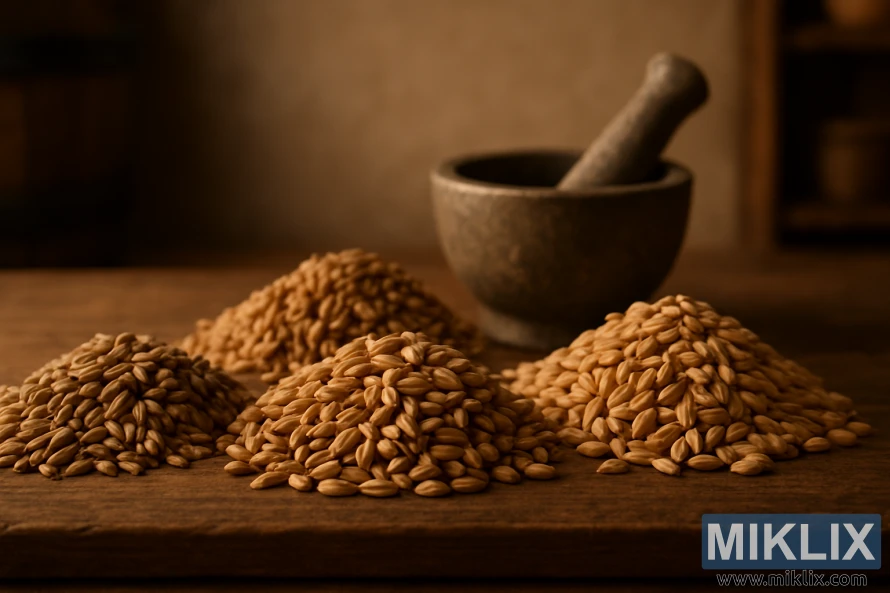
Advanced Brewing Techniques
Advanced brewing techniques can greatly improve the flavor of beers made with Victory Malt. Methods like decoction mashing add complexity and depth. This enhances the beer's overall taste.
Decoction mashing involves removing a part of the mash, boiling it, and then mixing it back into the main mash. This step boosts the malt's flavor. It results in a richer, more complex beer.
Adjusting the mash temperature can also bring out Victory Malt's unique traits. A higher temperature can make the beer sweeter and fuller. A lower temperature leads to a drier, more attenuated taste.
Trying different hop varieties and timing can also enhance Victory Malt's nutty and toasty notes. Whether you're making a robust amber ale or a malty brown ale, the right hops can take your beer to new heights.
When using advanced brewing techniques with Victory Malt, keep these points in mind:
- Know how the malt's flavor interacts with other ingredients.
- Try various mashing and brewing methods to get the flavor you want.
- Keep a close eye on the brewing process to maintain quality and consistency.
Quality Control and Consistency
Quality control and consistency are vital for successful brewing with Victory Malt. Achieving high standards in every batch requires meticulous attention and a deep grasp of the brewing process.
To uphold quality, brewers must implement checks and balances at every stage. This includes monitoring malt quality, managing mashing and brewing temperatures, and ensuring fermentation goes smoothly.
Consistency in brewing comes from adhering to established recipes and protocols. It's also critical to maintain a steady brewing schedule and use top-notch ingredients, including Victory Malt.
Key strategies for consistency include:
- Keeping accurate records of brewing processes and outcomes.
- Regular sensory evaluations of the beer.
- A quality control program with regular testing and analysis.
By focusing on quality control and consistency, brewers can create exceptional beers that highlight Victory Malt's unique qualities. This dedication to detail will attract a loyal customer base and solidify a reputation for excellence in the brewing world.
Conclusion
Mastering Victory Malt is essential for brewing excellence. Understanding its characteristics and optimal uses unlocks its full versatility. This knowledge allows brewers to create complex, full-bodied beers.
With Victory Malt expertise, brewers can craft beers that highlight its unique nutty, toasty flavors. By applying the knowledge and techniques discussed, brewers can experiment with new recipes. This enhances their craft.
As brewers work with Victory Malt, they gain a deeper understanding of balancing its flavor with other ingredients. This leads to greater consistency and quality in their beers. Their expertise enables them to create exceptional beers that delight and satisfy their customers.
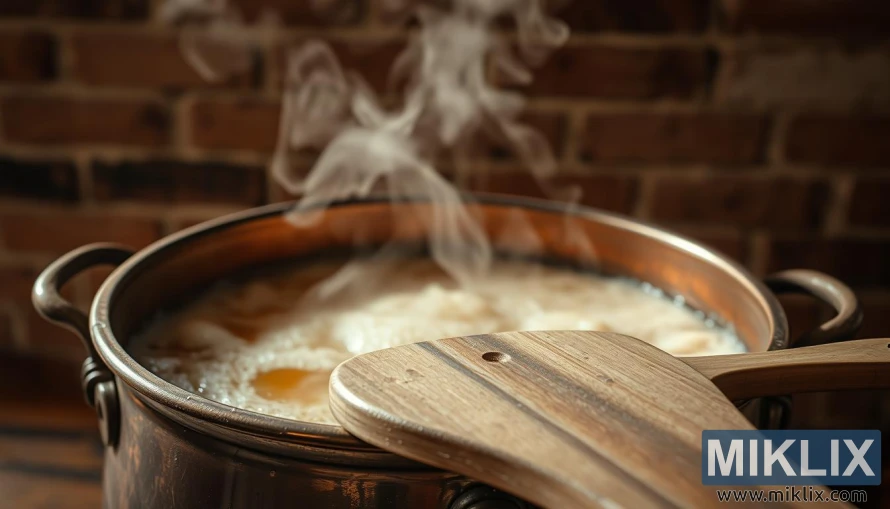
Further Reading
If you enjoyed this post, you may also like these suggestions:
